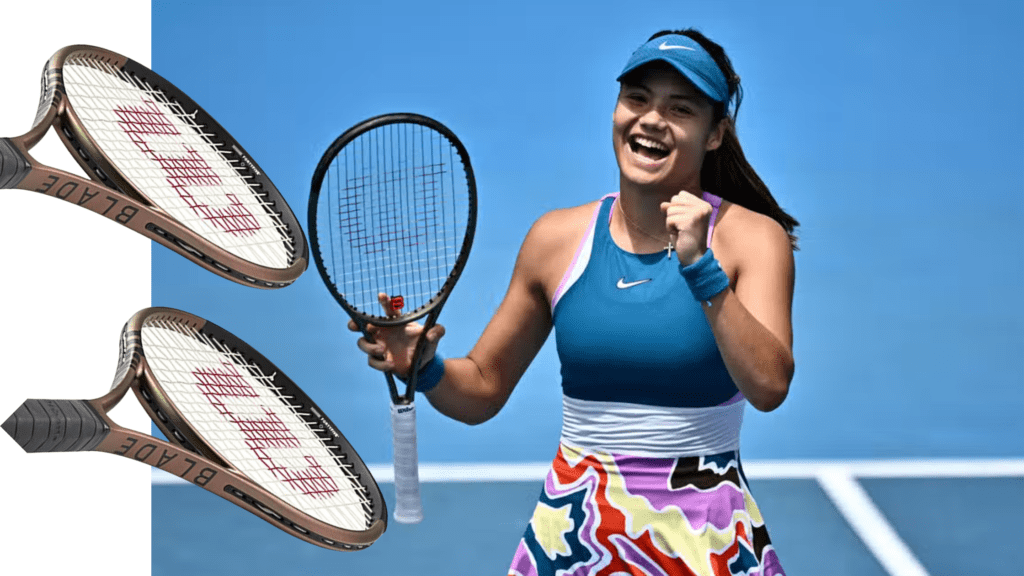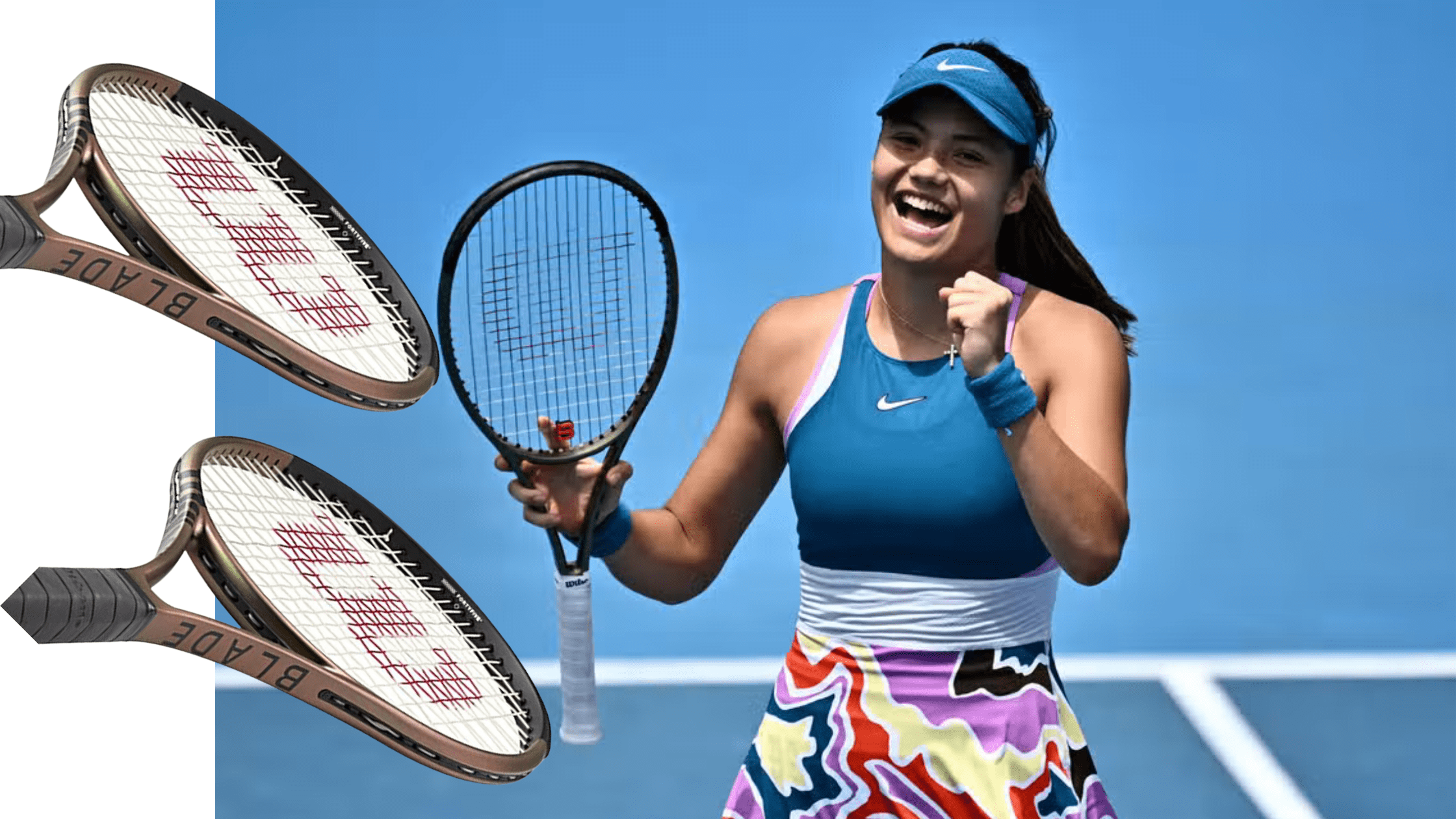Picture this: you’re at Wimbledon, eagerly watching a match unfold on the pristine grass court. But have you ever wondered why tennis court colors come in different shades? The truth is the selection of colors for a tennis court goes beyond mere aesthetics. It profoundly impacts player performance, visibility, and even psychology.
Court designers and organizers carefully consider the colors that will be used. The right choice can enhance player focus and reaction time by ensuring optimal contrast between the ball and the court surface. Moreover, spectators are included too; well-chosen colors captivate their minds and make every point an exhilarating experience.
So, let’s explore how something seemingly simple as color selection, can transform a tennis match into an unforgettable experience for everyone involved.
Reasons Behind the Popularity of Blue Colour for Modern Tennis Courts
Blue tennis courts have gained immense popularity in recent years for several reasons. Let’s explore why this vibrant color has become a top choice for tennis court surfaces:
- Visually soothing and reduces eye strain: The calming effect of blue makes it easier for players to focus on the game without straining their eyes. Unlike brighter colors, blue provides a pleasant backdrop that enhances concentration during intense matches.
- Contrasts nicely with yellow tennis balls: Blue courts starkly contrast the traditional yellow tennis balls, making them highly visible and easy to track. This contrast improves player performance by allowing them to react swiftly and accurately to each shot.
- Television broadcasting technology favors blue courts: In the era of televised sports, blue tennis courts offer enhanced visibility on screen. Broadcasting technology is optimized to capture the vibrant hues of blue, providing viewers with a visually appealing experience while watching matches from home.
Table of Contents
Environmental Factors Influencing Tennis Court Colour Decision
Climate conditions, surrounding vegetation and landscape, and reflectivity and heat absorption properties are all essential factors to consider when deciding on the color of a tennis court.
- Climate conditions play a crucial role in selecting appropriate court colors. In areas with hot climates, lighter colors such as soft blue or green can help reduce heat absorption, keeping the court surface cooler for players. On the other hand, in colder regions, darker colors like navy blue or dark green can help absorb more sunlight and retain heat.
- The surrounding vegetation and landscape should be considered to achieve aesthetic harmony. For instance, if the tennis court is in a lush green environment with tall trees, opting for earthy tones like clay red or brown could complement the natural surroundings. Conversely, brighter colors such as vibrant blue or yellow provide a striking contrast if the area has a more urban setting with concrete structures.
- Reflectivity and heat absorption properties significantly impact player comfort and court maintenance. Lighter colors tend to reflect more sunlight, reducing glare for players during matches. They may require less frequent resurfacing due to lower heat absorption. Conversely, darker colors can absorb more heat but may also increase glare. Finding the right balance between reflectivity and heat absorption is essential for player satisfaction and long-term court durability.
Considering these environmental factors when choosing tennis court colors ensures that players can enjoy optimal playing conditions while maintaining visual appeal within their surroundings.

Tips and Advice on How to Choose the Right Color for a Tennis Court
There are a few essential factors to consider. Let’s dive into some tips and advice to help you make the right decision.
Please look at the local climate when selecting light or dark shades.
- Light colors like beige or light green are ideal for hotter climates as they reflect heat and keep the court cooler.
- Darker colors like navy blue or dark green absorb heat, making them suitable for colder climates where warmth is desired.
Consult with experts to ensure compliance with regulations and standards.
- It’s crucial to consult with tennis court experts who are well-versed in local regulations and standards.
- They can guide you on color options that meet safety requirements, visibility guidelines, and any specific regulations set by governing bodies.
Take into account branding, sponsorship, or club colors, if applicable.
- If your tennis court is affiliated with a club or organization, consider incorporating their branding or club colors into your choice of court color.
- This can enhance the overall aesthetic appeal of the facility and create a sense of identity for players and spectators alike.
By considering these tips, you’ll be able to choose a tennis court color that not only complements your surroundings but also meets safety standards while reflecting the unique character of your club or organization. So make an informed decision that will enhance your playing experience!
Different Shades and Combinations Available for Tennis Courts
Are you looking to add some flair to your tennis court? There are plenty of options. From traditional shades to unique hues, here are some ideas to consider for your custom tennis court:
- Color Shades: Step away from the ordinary with various color shades. While green is the classic choice, you can opt for blue, red, or non-traditional colors like purple or orange. Let your imagination run wild, and choose a shade that reflects your personality.
- Combinations: Consider adding contrasting lines or patterns to make your tennis court stand out. These combinations not only enhance the visual appeal but also provide a unique touch to the overall look of the court. Experiment with different color schemes and designs to find what suits you best.
- Customizable Options: Personalization is key. With customizable options, you can choose colors and patterns based on your preferences. Make it truly yours by adding a personal touch.
By exploring different colors and combinations for your tennis court, you can create an eye-catching space that stands out. Whether you’re looking to make a statement in tournaments or enjoy casual games with friends, let your imagination guide you in finding the perfect shade and combination that suits your style.
So why settle for a plain old basketball court when you can have a vibrant and personalized tennis court? Get creative with color and design choices today!
Grass Green/Dark Green, Red/Dark Green, Light Blue/Dark Blue for Tennis Courts
Grass Green/Dark Green:
- A classic combination provides a natural aesthetic appeal.
- The green court color creates a visually pleasing environment that blends harmoniously with the surroundings.
- This traditional choice evokes a sense of tradition and elegance on the tennis court.
Red/Dark Green:
- High contrast option enhancing ball visibility against green surroundings.
- The vibrant red color stands out against the green background, making it easier for players to track the ball during intense games.
- This combination adds an exciting element to matches and helps players react quickly to shots.
Light Blue/Dark Blue:
- A popular choice is offering a modern look while maintaining good ball visibility.
- The light blue court color brings a fresh and contemporary vibe to tennis courts, appealing to players of all ages.
- With its contrasting dark blue lines, this option ensures excellent ball visibility while adding a touch of style.
When selecting tennis court colors, consider your preferences and the atmosphere you want to create. Whether you opt for the classic grass green/dark green combination, the high contrast of red/dark green, or the modern look of light blue/dark blue, each choice has its unique appeal. So, choose the color scheme that best suits your taste and enhances you’re playing experience!
Remember: It’s not just about winning games; it’s about enjoying every moment on the court. So why not make it even more enjoyable with a vibrant and visually captivating tennis court?
TSX/Tennis Court, Pantone/PMS TSX/Tennis Court/# Hex Color Code
TSX/Tennis Court: Manufacturers of tennis court surfaces use a specific color code known as TSX/Tennis Court. This code ensures consistency in the appearance of tennis courts across different locations.
Pantone/PMS TSX/Tennis Court/# Hex Color Code: The industry-standard color codes, such as Pantone and PMS, match accurately for tennis court surfaces. These codes help maintain a consistent color tone throughout various tennis courts.
Using these standardized color codes offers several benefits:
- Consistency: By adhering to the TSX/Tennis Court or Pantone/PMS color codes, manufacturers ensure that all tennis courts have the same shade of green. This consistency enhances the overall aesthetics of tennis facilities.
- Accurate Replication: When resurfacing or repairing a tennis court, the designated color code guarantees a precise replication of the original surface. Players can expect a uniform playing experience regardless of location.
- Branding and Sponsorship: Tennis tournaments often incorporate branding elements on their courts. Using specific color codes allows sponsors’ logos and tournament branding to be accurately represented on each court.
- Visual Appeal: The chosen shade of green for tennis courts is aesthetically pleasing and helps players track the ball’s movement during matches.
HTML/CSS Code Examples and Pantone/PMS TSX/Tennis Court/# Hex Color Code
Implementing specific colors on websites or digital platforms can be achieved using HTML/CSS code examples. Using these examples, developers can easily precisely replicate desired tennis court colors.
Pantone/PMS TSX/Tennis Court/# Hex Color Codes are available to ensure accurate color replication. These codes provide a standardized system for specifying exact shades of tennis court colors. Here’s how you can make use of them:
- HTML/CSS Code Examples:
- Utilize CSS color properties such as background color or color to apply specific colors to elements within your website or digital platform.
- Use hexadecimal color codes like #FF0000 for red or #00FF00 for green to define precise colors in web development.
- Employ RGB values like RGB (255, 0, 0) for red or RGB (0, 255, 0) for green to specify colors using the RGB color model in CSS.
- Pantone/PMS TSX/Tennis Court/# Hex Color Code:
- Pantone and PMS (Pantone Matching System) provide standardized color-matching systems across various industries.
- The Tennis Court Color Chart offers a range of predefined shades specifically designed for tennis courts.
- Hex Color Codes offer an alternative method to specify colors using hexadecimal notation precisely.
Developers can accurately implement desired tennis court colors on their websites and digital platforms by incorporating these HTML/CSS code examples and referencing the Pantone/PMS TSX/Tennis Court/# Hex Color Code. This ensures consistency and visual appeal while maintaining the authenticity of the chosen tennis court shade.
PPG Pittsburgh Paints for Exact Matching Tennis Court Paints
PPG Pittsburgh Paints offers a range of specialized paints explicitly formulated for tennis courts. These paints provide durability, traction, and exact color matching to meet industry standards.
- PPG Pittsburgh Paints offers a variety of paint options designed specifically for tennis courts.
- These paints are formulated to withstand the demands of intense gameplay and outdoor conditions.
- The durability of PPG Pittsburgh Paints ensures that tennis courts maintain their vibrant colors for an extended period.
- With exact color-matching capabilities, these paints allow tennis court owners to achieve a professional look that meets industry standards.
- PPG Pittsburgh Paints’ specialized formula provides excellent traction on the court surface, enhancing player safety and performance.
- The range of colors available allows tennis court owners to choose the perfect shade that complements their facility or brand identity.
- Using PPG Pittsburgh Paints, tennis court owners can ensure their courts stand out and create a visually appealing environment for players and spectators.
Conclusion
Choosing the right tennis court colors is crucial for various reasons. The popularity of blue for modern tennis courts can be attributed to its aesthetic appeal and colors its ability to enhance visibility and contrast with the yellow tennis ball. Environmental factors play a significant role in determining the ideal color for a tennis court, considering factors such as heat absorption and reflection.
In conclusion, choosing suitable colors for a tennis court requires careful consideration of various factors. By following expert advice and exploring different options available in shades and combinations, you can create an appealing and functional playing surface that meets your specific needs.

FAQs
Can I use any color I want for my tennis court?
While there are no strict rules on which colors you can choose for your tennis court, it is advisable to consider factors such as visibility, heat absorption/reflection properties, and the surrounding environment before deciding.
Will the chosen color affect gameplay?
The right choice of color can enhance visibility by providing better contrast with the yellow tennis ball. This can improve the gameplay experience and make it easier for players to track the ball.
Are there any regulations regarding tennis court colors?
Tennis court color regulations may vary depending on local governing bodies or tournament organizers. You should consult with relevant authorities or seek professional advice to comply with specific requirements.
How often should I repaint my tennis court?
The frequency of repainting will depend on usage, climate conditions, and maintenance practices. Generally, it is recommended to repaint every 3-5 years to maintain the court’s appearance and performance.
Can I use different colors for different parts of the tennis court?
Yes, it is possible to use different colors for various sections of the tennis court. This can be done to highlight specific areas like service boxes or create a visually appealing design.

